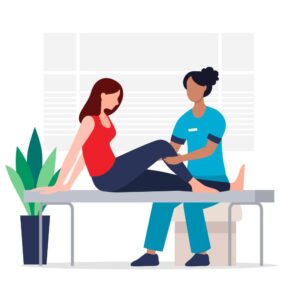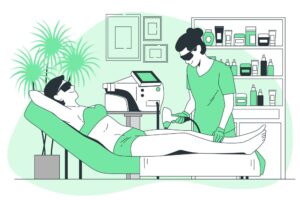Anyone who experiences foot, knee, hip, or back pain might benefit from custom orthotics. Unlike shoe inserts bought at the store, custom orthotics address structural issues in the feet and distribute body weight more evenly.
But before you run out and buy a pair of these shoe add-ons, here are the basics on how they work.
The weight of your body shapes feet
Foot issues like flat feet can lead to uneven weight distribution across the foot or ankle, creating excess pressure points or “hot spots” more prone to sores and injuries. Custom orthotics help redistribute that weight evenly across the entire surface area of your foot, reducing or eliminating pain and preventing future problems.
Over-the-counter shoe inserts are sometimes referred to as orthotics, but they don’t have the same level of support or customization as a pair of prescription-prescribed orthotics. These over-the-counter options usually fall into either the wear-moldable or heat-moldable categories. For the insoles to adapt to your foot’s shape, you will typically need to wear them for a few hours each day over a week.

Medically-prescribed orthotics, conversely, are made directly from a plaster mold of your foot or based on a 3D model of your foot. They also consider your shoes since different types require different orthotics.
Your feet are unique
If you’ve tried over-the-counter shoe inserts to alleviate foot pain or correct alignment issues and haven’t found relief, consider custom orthotics. These are designed and crafted to fit your unique feet from day one.
Typically, custom orthotics are made of semi-rigid materials like plastics (like polypropylene or graphite) and cushioning materials such as neoprene and ethylene-vinyl acetate. Your podiatrist will select the material for your foot problem and activity level.
Orthotics are either wear-molded or heat-moldable. With a wear-moldable orthotic, you’ll be asked to wear the shoe inserts several hours a week to help them adapt and adjust to your foot. With a heat-moldable orthotic, you’ll use them for a short period while heated to make them conform to your foot. The goal is to provide a perfect fit, reducing discomfort and improving function and stability.
Your feet are flexible
Like a strong building requires a firm foundation, the feet need support to prevent pain and injury. Without it, your entire body can suffer.
Custom orthotics are designed to bolster the foot’s biomechanical function by aligning it with the rest of your lower body and helping the foot absorb shock and provide balance. They also take pressure off painful or sore areas.
Whether you have a foot condition like posterior tibial tendonitis or a problem such as flat feet, your podiatrist will recommend the best type of orthotics for you. Soft orthotic devices made from compressible, soft materials are often recommended for conditions such as arthritis or deformities resulting from loss of protective fatty tissue.
Rigid or semi-rigid custom orthotics are often used for edge control and multidirectional sports athletes. A combination of a soft and a rigid device provides stability and control while allowing the foot to move in its natural range of motion.
Your feet need support
Your feet are the foundation of your body, and supporting them in an optimal functional position helps support your whole kinetic chain. If your feet, ankles, knees, or hips aren’t in their best functional position, it can lead to chronic pain and poor biomechanics that affect the rest of your body.
Custom orthotics provide personalized anatomical support that a generic, over-the-counter insert or shoe can’t offer. They are designed to conform to your unique foot shape and provide support in all areas of the foot, not just the heel or arch.
To create a custom orthotic, your physiotherapist will take a plaster cast of your feet. This is done in a non-weight bearing, neutral position that allows a precise representation of your foot shape and shoe size. The orthotic can then be created with various rigidities, cushioning levels, arch heights, and more to fit your specific foot needs. Once fitted, they will help realign your foot function to reduce pain and discomfort and prevent it from returning.











